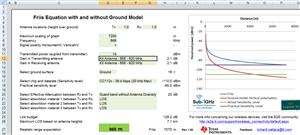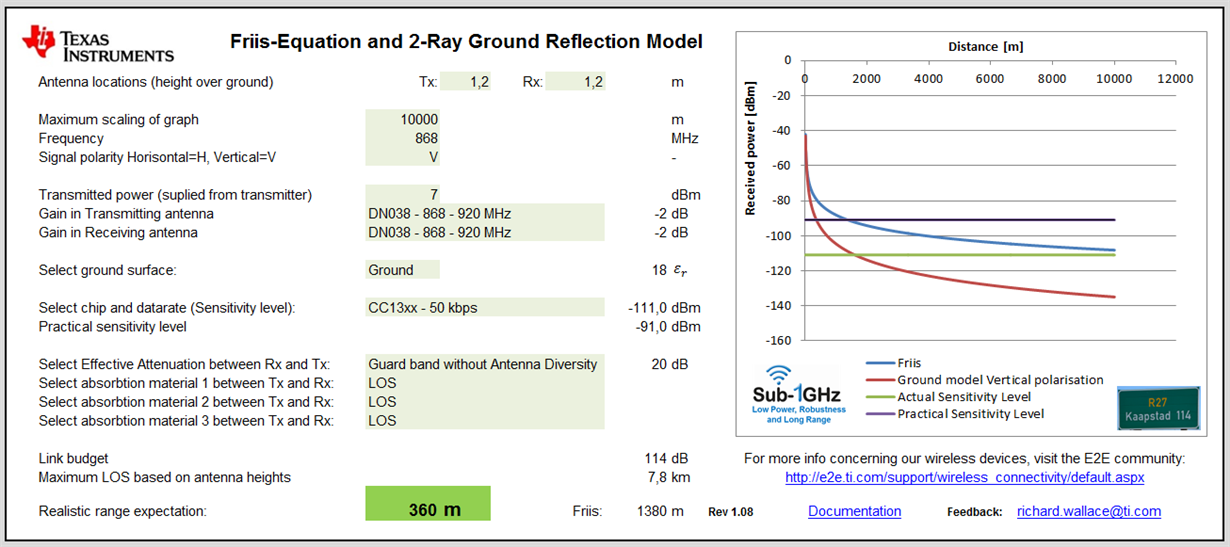Hi,
The attached excel sheet helps to estimate a practical range estimation for indoor and outdoor radio links.
This has been used a lot in TI seminars and is a helpful tool for calculating a realistic range expectation.
Latest version Rev 1.20:
SWSC002B -Range Estimation for Indoor and Outdoor Rev1_20.xlsm
and available at: http://www.ti.com/tool/rf-range-estimator
Any feedback is welcomed.
Regards, Richard




